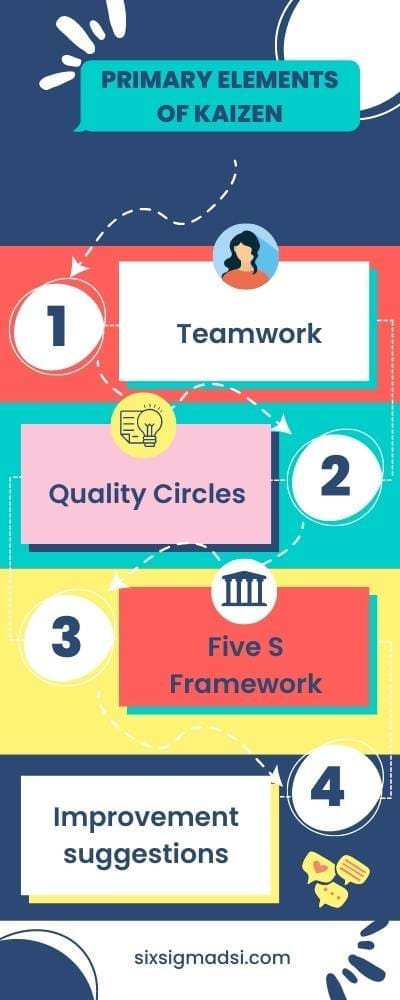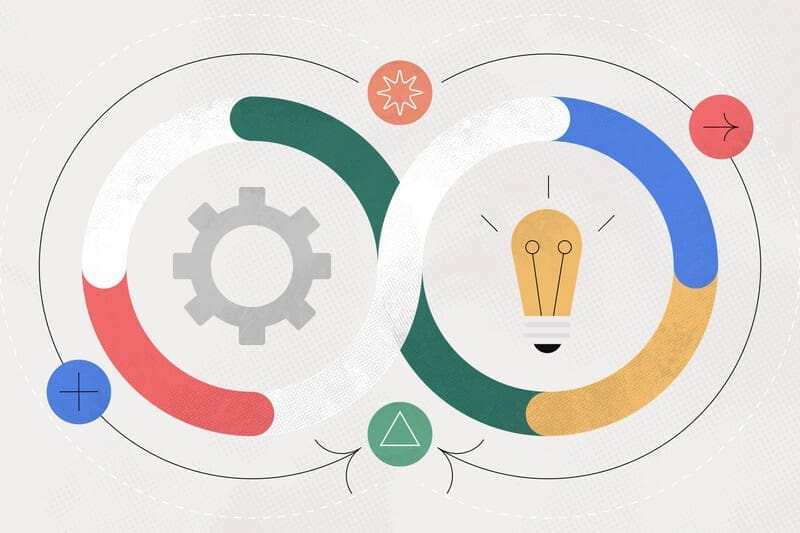Table of Contents:
The difference between Lean Six Sigma and Kaizen
The entire world is becoming more competitive and every organization is looking for different methods to improve their overall management skills. There are many training programs that can be used to improve the processes of organizations around the world. The spirit of Kaizen and Lean Six Sigma are two examples of such tools. They focus on real-life situations that result in consistent improvement across a variety of business models.
Six Sigma has been proven to be a powerful approach to dealing with product variations and defects. Six Sigma relies primarily on statistical analysis to deliver results for customers. It strives to eliminate waste and create a business model that is error-free.
Kaizen, on the other hand, goes far beyond data acquisition and tools. Kaizen is a Japanese term that means “continuous change is better for exponential growth”. Kaizen is not based on statistics. It helps people to see the differences in the company and understand the loopholes. Collaboration and cooperation are encouraged. This makes the organization more resilient and helps to make it more sustainable. Let’s compare Lean Six Sigma and Kaizen in this article.

Five Six Sigma Principle
Many organizations have used the Six Sigma principles to continuously improve their products and services.
Simplifying and Eliminating Waste
You must identify discrepancies and redundancies in your revenue streams. It is possible to replace large parts of products with smaller ones without sacrificing quality. This is the first step in reducing waste. Anything that does not add value to customers should be removed. Otherwise, they will eat all the value streams. Six Sigma focuses on eight stages of waste reduction. It could be transportation or it can occur with overproduction.
Customer Focus Rules
Six Sigma strives to build a lasting relationship with customers. Customers who are deemed top priority will result in an improvement in overall performance. The main goal of Six Sigma is to solve all customers’ problems. Six Sigma’s particular principle of defect identification has led to remarkable results in product quality and product quality.
Using facts to reduce complications
Practical implementation is governed by facts and information. It is important to always use numbers, not intuition. Any problem or complication that arises in business can be solved if facts are used. To verify or measure the reduction in waste, control charts can be used along with statistical data.
Get Your Team
Proper team management is key to rapid growth. Before any project can begin, it is important to train the team. This allows them to think objectively and avoid rational decisions. It is important for teams to be open to exploring different value streams. It is much easier to find solutions that are not obvious to everyone when there are many people involved. Each member can contribute their knowledge to improve waste management.
Consistent market observation
One must monitor the markets closely before stepping into any Kaizen or Six Sigma project. To explain their observations, they must develop a tentative explanation. This approach is better than making predictions about business development. Multiple variables can be used to help understand the uncertainties and can then be combined with deep root analysis to find a solution.
The primary elements of Kaizen

Kaizen is a four-pronged approach to improving people’s thinking about their business models. These principles revolve around encouragement, participation, and quality improvement.
Teamwork
With the right team, you can achieve your ultimate goal. Partnerships foster trust and compassion among all team members. Each member of the team is encouraged to take responsibility and come up with new ideas. Communication is another aspect that requires a team effort. Every member of the group should feel excited when others share their values and customs. Respect and individual preferences are important for everyone.
Quality Circles
Kaizen workshops involve teams that work on quality control. To provide feedback and corrections to the project’s implementation plans, a small circle or group is created. These employees tend to feel more empowered and more inclined towards their jobs when they form them. Employees can form quality circles to take advantage of opportunities and be active in the company. They also demonstrate their ability in solving difficult problems.
Five S Framework
For enhancing the existing work culture, the “Five S” framework can be used. It establishes rules and regulations that foster healthy relationships between employees and managers. This principle is central to Kaizen. It focuses on customer satisfaction as well as employee satisfaction. Although this may seem like a lot of work, there is always room for improvement. This framework is built on self-discipline. Respect for the policies of the organization and their work procedures can have a major impact on their discipline.
Improvement suggestions
Kaizen is about using the suggestions of all members. Their ideas are more valuable than any technical tool. In this instance, the designation does not determine value. Every individual has the duty and right to make small, but significant improvements to his or her business. Kaizen values change, but not their volume. It is the participation and contribution that matter most.
Six Sigma vs Kaizen: Differences
While both programs are great at solving problems, the approach used is different. Six Sigma utilizes technical data to identify and solve product deviations. Kaizen uses the opposite approach. Kaizen, on the other hand, focuses on improving work environments, which can have a positive effect on overall performance. Lean Six Sigma relies on statistics to correct problems, while Kaizen uses emotions and empathy to solve employees’ issues.
Kaizen is a methodology that improves the company overall. It believes that relying on charts alone will not be sufficient long-term. Six Sigma has different approaches that aim to reach measurable targets. Kaizen’s primary goal has not been to reach these many targets within the first month of the year. They always focus on areas that can be improved. Kaizen is about making the individual’s life better and more satisfying.
Lean Six Sigma tends to standardize more than Kaizen, but the spirit of Kaizen still believes in the organization. Kaizen believes in improving organizational processes. Six Sigma’s unification allows for the process to be targeted, which increases only a specific component of the entire product.
Both Six Sigma and Kaizen can help you save time and money. Let’s continue with the article on Six Sigma and Kaizen. We will then discuss whether these two approaches can co-exist.

When they co-exist, are they contradictory or complementary?
A hybrid Six Sigma/Kaizen system will allow any company to achieve breakthroughs that uncover non-existent issues and provide solutions in no time.
Both can co-exist and have a higher chance of reaching peak performance. Kaizen is always looking for ways to improve its business model. Six Sigma takes care of the target audience and creates optimal conditions for exponential growth. Both are complementary in many respects. Multi-training puts management in a better financial and competitive position. Six Sigma takes care of analytics and statistics, and Kaizen promotes a work culture.
Kaizen prevents employees from making bad decisions when managing Six Sigma projects. The business model is more visible when it is combined with both strict protocols and innovative ideas. If one of the two is not properly executed, it can be contradictory. It is vital that there be a balance between Six Sigma and Kaizen tools in order for it to remain sustainable.
Six Sigma and Kaizen: What’s the Conclusion
Both methods are great, but it is best to combine them to increase revenue and growth. The results of working together will be different.
Six Sigma combined with Lean only corrects errors and tries more product-centric. The spirit of Kaizen offers different plans that focus on individual performance and improvement. Both can increase productivity in a company, but one takes more resources and the other requires less. Six Sigma and Kaizen are part of a group of quality management certificate courses. A workforce with combined Six Sigma and Kaizen knowledge can bring greater value to the organization.
Kaizen is a way to help create a new generation of managers. One of these ways is through the innovative participation of employees. With the various Kaizen activities, confidence has been shown to grow. The kaizen tools can be quicker, but Lean Six Sigma is better. Six Sigma can help with front-end aid, while Kaizen can bring out the core principle. I hope this article, Six Sigma vs Kaizen has broadened your understanding of these approaches.



















